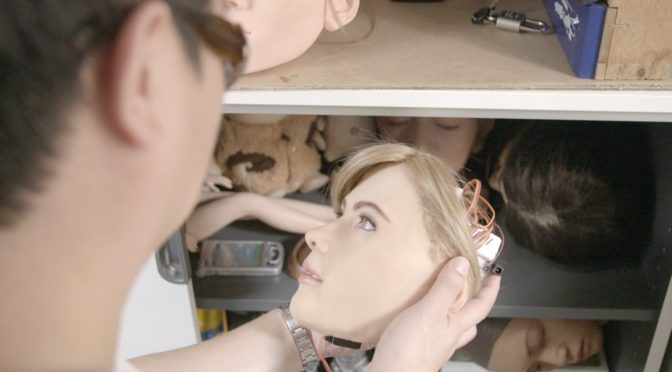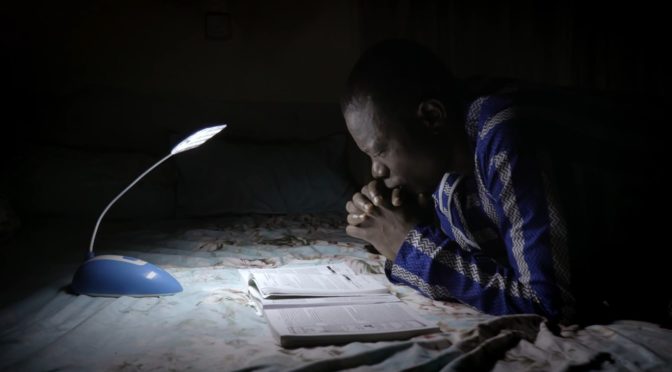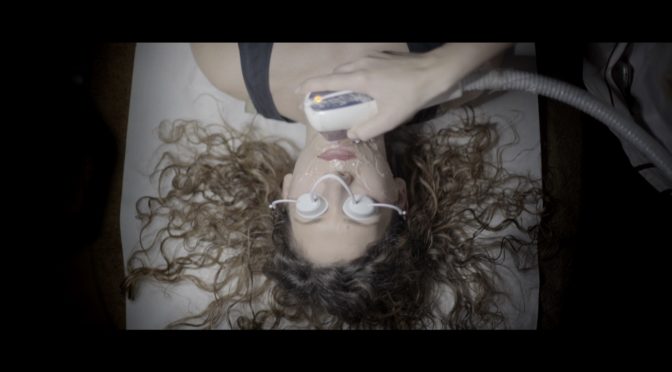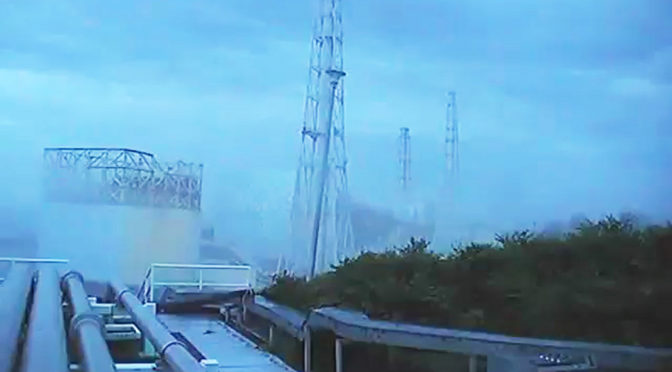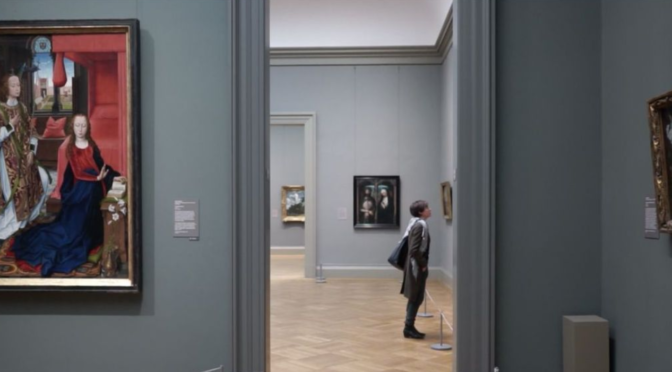Presentato nella sezione Internazionale.doc, il film mostra la vita di una famiglia non monogama e anticonvenzionale composta da un bambino di nove anni, Derick, figlio biologico di Tammy, e dalle altre tre madri che lo crescono: Bruna, Shiva e Ana.
Continua la lettura di “MÃES DO DERICK” (MOTHERS OF DERICK) DI DÊ KELMArchivi tag: Documentario
U SLAVU LJUBAVI (IN PRAISE OF LOVE), BY TAMARA DRAKULIĆ
Article by Niccolò Buttigliero
Translated by Giulia Neirone
Black screen, wind. Then, human voices together with neighs. In a dusty and austere racecourse, a horse race is interrupted at its acme, through a freeze-frame. Who is the winner, is not for us to know.
At this moment U slavu ljubavi (In Praise of Love) re-starts for the first time. Black screen again, nature sounds again: everything is covered by chirps and bellows. Now, humanity is not even considered on the sound level. From untouched nature to animals. Long static shots, mesmerized by horse bottoms. It seems that Drakulić’s point of view is not special, it is just one of the many possible perspectives. The world flows spontaneously, through every breath. Doesn’t matter if anthropomorphic subjects leave the screen. It is not about décadrages, or the subversion of some rules. It is rather about not identifying ourselves with a hierarchical organization of the audiovisual material. Everything is on the same level, and Drakulić succeeds in giving back the undecidability of one single point of view..
Continua la lettura di U SLAVU LJUBAVI (IN PRAISE OF LOVE), BY TAMARA DRAKULIĆU SLAVU LJUBAVI (IN PRAISE OF LOVE), DI TAMARA DRAKULIĆ
Schermo nero, vento. Poi, un vociare umano, commisto a nitriti. In un polveroso e spartano ippodromo, una corsa di cavalli viene interrotta al suo acme, con un ricorso ad un freeze-frame. A chi spetti la vittoria, non è dato saperlo.
Ecco che U slavu ljubavi (In Praise of Love) ri-comincia per la prima volta. Di nuovo nero, di nuovo rumori ambientali: a sovrastare ogni cosa sono cinguettii e muggiti. La presenza umana, stavolta, non è contemplata nemmeno sul piano sonoro. Dalla natura, incontaminata, si passa ai corpi animali. Lunghe inquadrature statiche, ipnotizzate da deretani equini. Lo sguardo di Drakulić non sembra porsi come un punto di stazione privilegiato rispetto ad altri, ma come uno dei tanti possibili. Il mondo viene lasciato fluire nella sua spontaneità, in ogni suo respiro. Non importa se i soggetti antropomorfici abbandonano il campo. Non è questione di décadrages, o di sovvertire una qualche regola grammaticale. Si tratta piuttosto di non riconoscersi in un’organizzazione gerarchica del materiale audiovisivo. Tutto è ugualmente meritevole di attenzione, e Drakulić è capace di restituirci l’indecidibilità di un punto di vista.
Continua la lettura di U SLAVU LJUBAVI (IN PRAISE OF LOVE), DI TAMARA DRAKULIĆ“HERZOG INCONTRA GORBACIOV” DI WERNER HERZOG E ANDRÉ SINGER
«Ci abbiamo provato».
Tre semplici parole, una sorta di testamento. Una dichiarazione in apparenza sconfortata, che si rivela monito per il futuro, racchiudendo forse il senso stesso del documentario Herzog incontra Gorbaciov, diretto da Werner Herzog e André Singer nel 2018 e distribuito in Italia per pochi giorni questo gennaio.
“FUORI TUTTO” DI GIANLUCA MATARRESE
Torino, fine anni ’60. Le rovine della guerra sono solo un ricordo, il Belpaese è trainato dalla crescita industriale e parole come boom o miracolo economico guidano e plasmano l’immaginario nazionale. Qui due meridionali si conoscono, si innamorano, mettono su famiglia. Lei viene dalla Calabria, lui invece è pugliese, di Canosa. Cominciano come operai, poi decidono di mettersi in proprio e riescono ad aprire un negozio di calzature. Sono gli anni dei consumi di massa, i salari crescono e tutti possono permettersi un paio di scarpe nuove. È così che nasce Togo, il piccolo impero della famiglia Matarrese, una delle più grandi e redditizie cooperative piemontesi di vendita al dettaglio.
Continua la lettura di “FUORI TUTTO” DI GIANLUCA MATARRESE“L’APPRENDISTATO” DI DAVIDE MALDI
Dopo Frastuono, presentato al TFF nel 2014, Davide Maldi realizza il secondo capitolo di una trilogia sull’adolescenza. Il film, presentato nella sezione TFFDOC/italiana, parte da un presupposto ben preciso: ricercare un contesto in cui dei ragazzi siano portati sin dalla giovane età a imparare un mestiere e, di conseguenza, ad accelerare il proprio percorso di crescita. Da qui deriva la decisione di segire il primo anno scolastico di una classe di cinque studenti di un istituto alberghiero.
“L’APPRENDISTATO” BY DAVIDE MALDI
Article by: Valentina Velardi
Translated by: Alice De Vicariis
After Frastuono, presented at the TFF in 2014, Davide Maldi makes the second chapter of a trilogy on adolescence. The film, presented in the section TFFDOC/italiana, starts from a clear premise: the search for a context where teens are encouraged to learn a profession at an early age, and so grow up faster. For this reason, Maldi decided to follow the first school year of an hospitality institute class composed of five students.
Continua la lettura di “L’APPRENDISTATO” BY DAVIDE MALDI“SELFIE” DI AGOSTINO FERRENTE
Napoli è ormai città cinematograficamente mitologica. La genesi del mito la si deve, è chiaro, a Gomorra. Pietra miliare della metamorfosi napoletana, della sua trasformazione da città mediterranea, farsesca e fiera, a metropoli in mano alla camorra e al degrado, Gomorra sembra aver ridisegnato connotati e simbologia del capoluogo campano: e là dove c’eran Totò e Peppino a far ridere sotto al sole, oggi ci sono ragazzini con la pistola tra le mani. Così, dopo qualche anno in sordina, forse passato a riflettere sugli effetti nocivi di questa trasfigurazione immaginifica (si pensi all’apologia del sindaco De Magistris: “Napoli non è Gomorra. È la città della cultura”), nell’ultimo lustro diversi registi si son fatti coraggio e hanno ripreso il discorso iniziato da Garrone (via Roberto Saviano) e proseguito sulle cronache: per ultimi, oltre all’omonima trasposizione televisiva del capolavoro garroniano, La paranza dei bambini di Giovannesi e questo Selfie firmato Agostino Ferrente.
Continua la lettura di “SELFIE” DI AGOSTINO FERRENTE“The truth about killer robots” di di Maxim Pozdorovkin
Non bisogna farsi trarre in inganno dal titolo del documentario di Maxim Pozdorovkin The Truth About Killer Robots: non ci troviamo davanti a un lavoro di science fiction in cui le macchine si ribellano e uccidono gli umani, e quella a cui assistiamo è un’invasione graduale e più subdola. Il regista utilizza il pretesto dell’indagine sulla morte delle prime vittime di intelligenze artificiali per mostrarci come la tecnologia stia evolvendo, trasformando totalmente il nostro modo di fruire di determinati beni e servizi.
Continua la lettura di “The truth about killer robots” di di Maxim Pozdorovkin“Take Light” di Shasha Nakahai
Tra i grandi paradossi che segnano il continente africano vi è quello dell’inaccessibilità ai servizi basilari nonostante la grande disponibilità di risorse prime. È questo il caso della Nigeria che, nonostante possieda la più grande riserva di gas naturale in Africa e sia il maggior produttore di energia elettrica, può garantire accesso alla linea elettrica a meno del 50% della sua popolazione, e anche questo 50% ne può disporre per limitate fasce orarie, spesso interrotte da improvvisi blackout e malfunzionamenti.
Continua la lettura di “Take Light” di Shasha Nakahai“Normal” di Adele Tulli
Una ricerca di dottorato che si trasforma in un viaggio e diventa un film. Un percorso durato più di tre anni e che ha attraversato tutta l’Italia allo scopo di provare a fare una mappatura di quello che potrebbe essere definito, oggi in Italia, il sistema dei generi. Normal di Adele Tulli è un susseguirsi di immagini che tentano di restituire quelle che sono le convenzioni sociali legate ai concetti di mascolinità, femminilità e sessualità di un paese che si racconta attraverso gesti, parole e rituali che sembrano ancora troppo “limitanti”.
Continua la lettura di “Normal” di Adele Tulli“Butterfly” di Alessandro Cassigoli e Casey Kauffman
Gli antichi greci vedevano i loro migliori atleti come degli eroi, elogiavano ed elevavano quegli uomini rispetto alla massa, e gli artisti li cantavano in ogni modo: dall’esaltazione della perfezione dei corpi, rappresentata nelle statue, all’elogio delle loro gesta sportive nei componimenti, come quelli delle Olimpiche di Pindaro. Questa esaltazione cresceva con la consacrazione dell’atleta nella vittoria in una delle discipline sportive praticate proprio nelle Olimpiadi, manifestazione giunta fino a noi e alla quale, tutt’oggi, il mondo intero conferisce enorme importanza.
Continua la lettura di “Butterfly” di Alessandro Cassigoli e Casey Kauffman“GRIZZLY MAN” DI WERNER HERZOG
Parlare di Werner Herzog è facile e difficile allo stesso tempo. Facile perché il cineasta tedesco è tra i più grandi registi contemporanei: uomo affascinante e integerrimo, su Herzog si può dire e raccontare molto, tanto che la sua persona appare ai cinefili più giovani come un personaggio memorabile di un film, più che come l’uomo dietro la macchina da presa . D’altronde è stato lo stesso Herzog a spingere verso questa presentazione di sé come figura iconica e leggendaria, rappresentandosi nei suoi propri film come un Caronte delle anime mostruose, apparendo cioè nella messinscena dei suoi documentari accanto, più che di fronte, ai personaggi quasi mitologici che ha saputo far parlare. Eppure, nonostante questa proliferazione dei discorsi possibili su Herzog e, quindi, nonostante la facilità con cui si può pescare dal cilindro della personalità e dalla storia cinematografica del regista un discorso, diciamo così, “valido” ecco, nonostante tutto, parlare di Werner Herzog risulta estremamente difficile e complesso.
Continua la lettura di “GRIZZLY MAN” DI WERNER HERZOG“ATTO DI FEDE” DI VITTORIO ANTONACCI
Dopo aver conosciuto i componenti di una banda da giro, ossia una banda musicale itinerante che suona alle feste religiose con processione, in occasione della realizzazione di un breve documentario intitolato Come sopravvivere alla banda, il regista Vittorio Antonacci ha sentito il bisogno di espandere l’indagine attorno alle professionalità itineranti che si sviluppano attorno alle feste patronali e più in generale religiose.
“IN QUESTO MONDO” BY ANNA KAUBER
Article by: Marco De Bartolomeo
Translation by: Maria Elisa Catalano
A quiet clearing in the mountais, the tinkling of cowbells, a shepherd playing the violin near the flock. It might seem to be an idyll, a fiction, a delicate literary landscape like the one that we find in Virgilio’s Bucoliche, or from Tasso’s Aminta; but here, the mountains are in Veneto, the sheep are called by their names and the shepherd is actually a girl who has preferred pastoralism to the passion for music.
“IN QUESTO MONDO” DI ANNA KAUBER
Una tranquilla radura di montagna, il tintinnare dei campanacci, un pastore che suona il violino vicino al suo gregge. Potrebbe sembrare un idillio, una finzione, un delicato paesaggio letterario come quello delle Bucoliche di Virgilio o dell’Aminta di Tasso; se non fosse che qui le montagne sono quelle del Veneto, le pecore sono chiamate per nome e il pastore, in realtà, è una ragazza che alla passione per la musica ha preferito la pastorizia.
“4 BÂTIMENTS, FACE À LA MER” DI PHILIPPE ROUY
Dell’affascinante sezione di documentari del TFF, intitolata “Apocalisse”, fa parte 4 Bâtiments, face à la mer, documentario atipico che sfrutta le registrazioni perpetue di una webcam installata all’interno della centrale nucleare di Fukushima. Philippe Rouy, con queste immagini, realizza un film che offre allo spettatore diversi spunti di riflessione, in particolare sulla definizione e sul concetto stesso di apocalisse.
Continua la lettura di “4 BÂTIMENTS, FACE À LA MER” DI PHILIPPE ROUY
“IMPETUS” BY JENNIFER ALLEYN
Article by: Cristian Viteritti
Translated by: Giulia Maiorana
Impetus by Jennifer Alleyn is a hybrid film which combines typical expressive forms of documentary films, such as interviews, with fictional ways of narrating. The final product is a film full of storylines and timeframes that lead to a reflection on action and movement’s relevance and strength.
“IMPETUS” DI JENNIFER ALLEYN
Impetus di Jennifer Alleyn è un film ibrido, che mescola alcune delle tipiche modalità espressive del documentario, come l’intervista, con i mezzi narrativi delle opere di finzione. Il prodotto finale è un film ricco di intrecci e di linee temporali che terminano in una riflessione sull’importanza e la potenza del movimento, dell’azione.
“INTERSECTIONAL VIEWS” DI ANDREA SILVESTRO E STEFANO STEFANINI
“Non mi è mai stato detto di essere attraente nonostante il colore della mia pelle”.
“Non ho mai ricevuto insulti o violenze per il mio orientamento sessuale”.
“Non mi è mai stata negata un’opportunità lavorativa a causa del mio genere”.
In una società sistematicamente ingiusta, poter fare questo tipo di affermazioni equivale a un privilegio. Cos’è quindi l’intersezionalità e perché è così importante parlarne?
Continua la lettura di “INTERSECTIONAL VIEWS” DI ANDREA SILVESTRO E STEFANO STEFANINI







